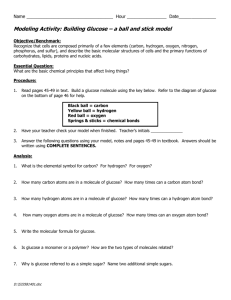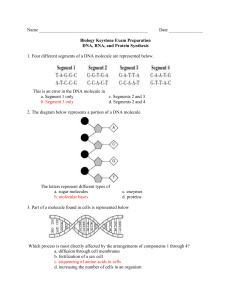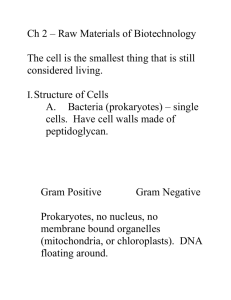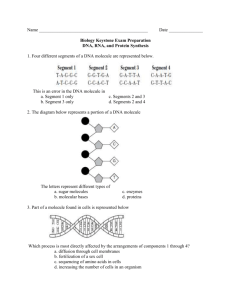semester exam review packet work day.
advertisement
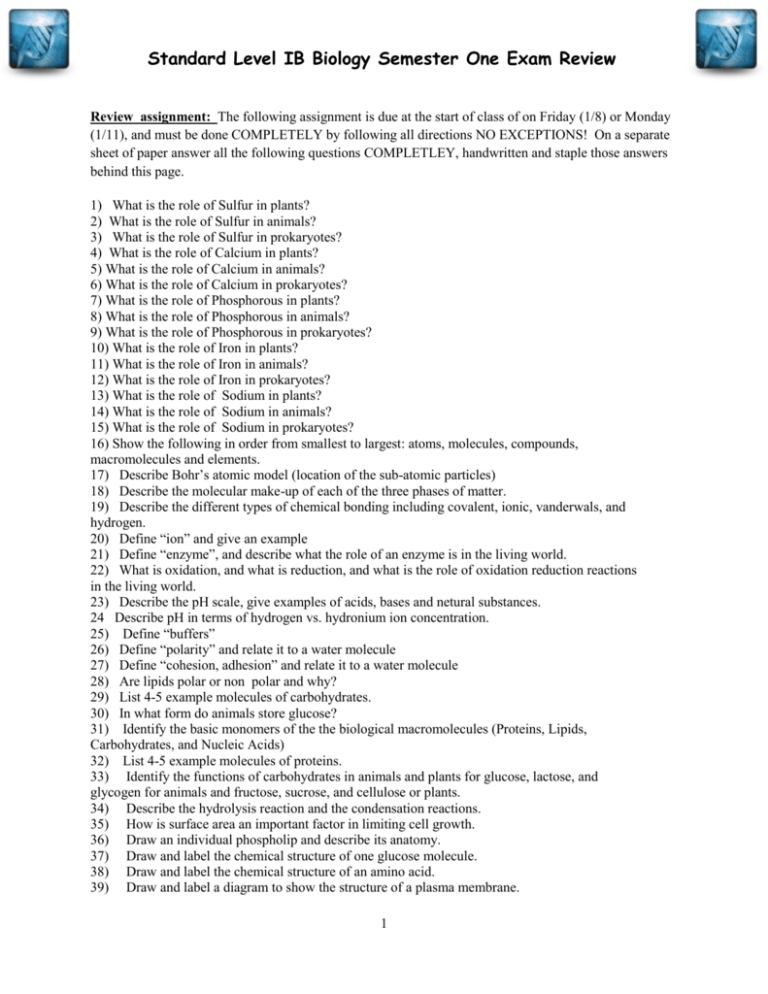
Standard Level IB Biology Semester One Exam Review Review assignment: The following assignment is due at the start of class of on Friday (1/8) or Monday (1/11), and must be done COMPLETELY by following all directions NO EXCEPTIONS! On a separate sheet of paper answer all the following questions COMPLETLEY, handwritten and staple those answers behind this page. 1) What is the role of Sulfur in plants? 2) What is the role of Sulfur in animals? 3) What is the role of Sulfur in prokaryotes? 4) What is the role of Calcium in plants? 5) What is the role of Calcium in animals? 6) What is the role of Calcium in prokaryotes? 7) What is the role of Phosphorous in plants? 8) What is the role of Phosphorous in animals? 9) What is the role of Phosphorous in prokaryotes? 10) What is the role of Iron in plants? 11) What is the role of Iron in animals? 12) What is the role of Iron in prokaryotes? 13) What is the role of Sodium in plants? 14) What is the role of Sodium in animals? 15) What is the role of Sodium in prokaryotes? 16) Show the following in order from smallest to largest: atoms, molecules, compounds, macromolecules and elements. 17) Describe Bohr’s atomic model (location of the sub-atomic particles) 18) Describe the molecular make-up of each of the three phases of matter. 19) Describe the different types of chemical bonding including covalent, ionic, vanderwals, and hydrogen. 20) Define “ion” and give an example 21) Define “enzyme”, and describe what the role of an enzyme is in the living world. 22) What is oxidation, and what is reduction, and what is the role of oxidation reduction reactions in the living world. 23) Describe the pH scale, give examples of acids, bases and netural substances. 24 Describe pH in terms of hydrogen vs. hydronium ion concentration. 25) Define “buffers” 26) Define “polarity” and relate it to a water molecule 27) Define “cohesion, adhesion” and relate it to a water molecule 28) Are lipids polar or non polar and why? 29) List 4-5 example molecules of carbohydrates. 30) In what form do animals store glucose? 31) Identify the basic monomers of the the biological macromolecules (Proteins, Lipids, Carbohydrates, and Nucleic Acids) 32) List 4-5 example molecules of proteins. 33) Identify the functions of carbohydrates in animals and plants for glucose, lactose, and glycogen for animals and fructose, sucrose, and cellulose or plants. 34) Describe the hydrolysis reaction and the condensation reactions. 35) How is surface area an important factor in limiting cell growth. 36) Draw an individual phospholip and describe its anatomy. 37) Draw and label the chemical structure of one glucose molecule. 38) Draw and label the chemical structure of an amino acid. 39) Draw and label a diagram to show the structure of a plasma membrane. 1 Standard Level IB Biology Semester One Exam Review 40) 41) 42) 43) 44) 45) 46) 47) 48) 49) 50) 51) 52) 53) 54) 55) 56) 57) 58) 59) 60) 61) 62) 63) 64) 65) 66) 67) 68) 69) 70) 71) 72) 73) Draw and label a nucleotide. Describe the base pairing rules for DNA and RNA. Draw and label the chemical structure of a fatty acid. What type of reactions allows a dipeptide to be produced from single amino acids? What is the make-up of the backbone of DNA? Where do hydrogen bonds in DNA occur? State at least four functions of proteins. What is the major usable energy source of cells? How many carbons are in ribose? In glucose? What two functional groups do all amino acids include? How many different R groups are there? Explain the hydrophilic and hydrophobic regions of a phospholipid. Write the equation for photosynthesis. Compare exergonic and Endergonic reactions. What affect do enzymes have on activation energy? Write the structural formula for glycerol. Name the base that occurs in DNA and ATP. How does the induced fit model of enzyme action differ from the lock and key model? Explain the effect of increasing temperature on the rate of photosynthesis in a green plant. Name at least 4 monosaccharides. . Why is carbon dioxide not considered an organic compound? Name a polysaccharide that does not occur in plants. Name two polysaccharides that do not occur in animals. Explain cohesion and adhesion as they pertain to a molecule of water. Why is water said to have a high specific heat? Draw a molecule of glucose. What group of chemicals have optimum temperatures and optimum pH? What happens to enzymes in denaturation? Define “concentration gradient.” Define “diffusion” Define “osmosis” Why can polysaccharides be transported via diffusion? Why is enzymatic activity a function of membrane proteins? What is the most important reason stem cells are so important for therapeutic use? 2

